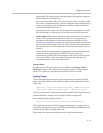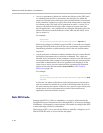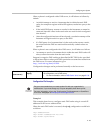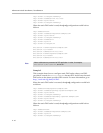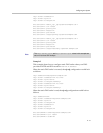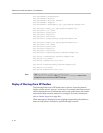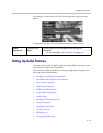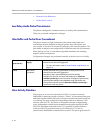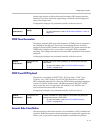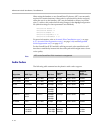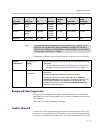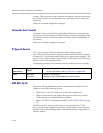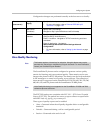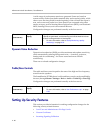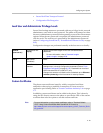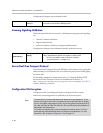
Configuring Your System
4 - 75
packets (also known as Silence Insertion Descriptor (SID) frames) and also
decodes CN packets, efficiently regenerating a facsimile of the background
noise at the remote end.
Configuration changes can performed centrally at the boot server:
DTMF Tone Generation
The phone generates dual tone multi-frequency (DTMF) tones in response to
user dialing on the dial pad. These tones are transmitted in the real-time
transport protocol (RTP) streams of connected calls. The phone can encode the
DTMF tones using the active voice codec or using RFC 2833 compatible
encoding. The coding format decision is based on the capabilities of the remote
end point.
Configuration changes can performed centrally at the boot server:
DTMF Event RTP Payload
The phone is compatible with RFC 2833 - RTP Payload for DTMF Digits,
Telephony Tones, and Telephony Signals. RFC 2833 describes a standard
RTP-compatible technique for conveying DTMF dialing and other telephony
events over an RTP media stream. The phone generates RFC 2833 (DTMF
only) events but does not regenerate, nor otherwise use, DTMF events
received from the remote end of the call.
Configuration changes can performed centrally at the boot server:
Acoustic Echo Cancellation
The phone employs advanced acoustic echo cancellation (AEC) for hands-free
operation. Both linear and non-linear techniques are employed to aggressively
reduce echo yet provide for natural full-duplex communication patterns.
Central
(boot server)
Configuration file:
sip.cfg
Enable or disable VAD and set the detection threshold.
• For more information, refer to Voice Activity Detection <vad/> on
page A-52.
Central
(boot server)
Configuration file:
sip.cfg
Set the DTMF tone levels, autodialing on and off times, and other
parameters.
• For more information, refer to Dual Tone Multi-Frequency
<DTMF/> on page A-28.
Central
(boot server)
Configuration file:
sip.cfg
Enable or disable RFC 2833 support in SDP offers and specify the
payload value to use in SDP offers.
• For more information, refer to Dual Tone Multi-Frequency
<DTMF/> on page A-28.



